
Elaine and I have spent a lot of time in the past seven years since our wedding day sliding around snow on skis. It’s our passion, and has led us to mountains and northern locales around the world. We’ve had the fortune to ski chest deep powder in British Columbia, beautiful mountains that drop to the ocean in northern Norway and endless plateaus of white in that same country that resemble Greenland or Antarctica. Skiing has brought us much good.
Yet those trips are a major outlier to what actually happens on a daily basis. They are the exclamation point on seasons where honestly a lot of the skiing is mundane and sometimes downright terrible. Take a couple days ago, for example. A ridiculously warm November melted out the one slope decent for some tentative turns. We ended up walking down the hill, skins on skis, picking our way through rocks and tundra and dreaming of a better winter to come.
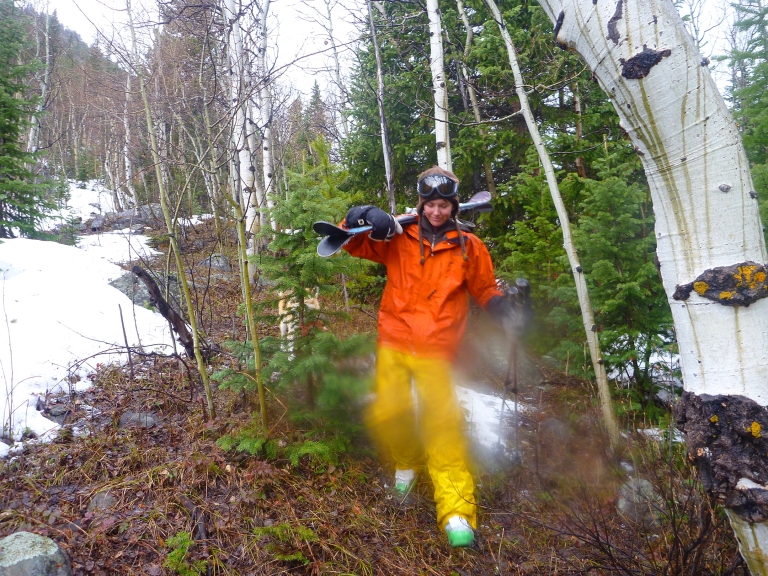
A point of pride among skiers is the magical 100 day a year mark. In the Vermont mountain town where I grew up, under the shadow of Mad River Glen, it was a badge of honor with the generation of ski bums I admired and looked up to. The John Egan’s and Jeremy Nobis’ didn’t miss days because they didn’t feel like skiing. The credo was, get out there as often as you can, don trash bags when it’s raining, don’t be afraid of black ice and -30° F temps, and ski every damned day.

Since being married in 2010, Elaine and I have never skied less that 125 days in a winter, and one year, the magical winter of 2010-11, we almost hit 200 days. Elaine and I also work full time, 40 hours a week, and right now, when our value in the ski industry is high, quite a bit more.
Of course, the easiest way to ski 100 days a year is to work at the resort. But that’s not an option for everybody. Don’t worry…there are other ways. This article is written for skiers who do not live in those lucky areas where there is night skiing available. Of course, night skiing with tracks and runs lit till 9 or 10 pm makes it much easier to rack up the days.
Skiing 100 days a year and working 40 hours a week requires dedication that borders on obsession. But if it’s something you want, and you live within a reasonable drive of accessible snow, it’s possible. Here are ten tips to ski 100 days a year:
- The early bird catches the snow – This isn’t really about getting first tracks, although that can be an added benefit. Simply put, if skiing 100 days a year is something you want, early rising is imperative. After a long hard day of work, it might not happen. The couch can be too appealing. Get your kit – your clothes, pack, skis, boots, essentially all your gear – organized the night before. That way when the alarm goes off at 4:30 am, all you have to do is stagger out of bed, get dressed and go. Early nights to bed and dark and cold mornings will be your reality for the next five months. Embrace it.

Early mornings can hurt. The rewards are plentiful. - Backcountry is your friend – Unless you work as a night chef, waitress or late night E.R. surgeon (or work at the ski resort), it’s near impossible to work 40 hours a week and ski 100 days a year just relying on lift-accessed skiing. Invest in a backcountry set-up. A robust BC kit can work fine at the resort. But you need to be able to access snow on those Monday thru Friday mornings too. To ski 100 days a winter and work full-time, you need to earn your turns and ski outside the 9 am to 4 pm window. Your lungs and legs will thank you.
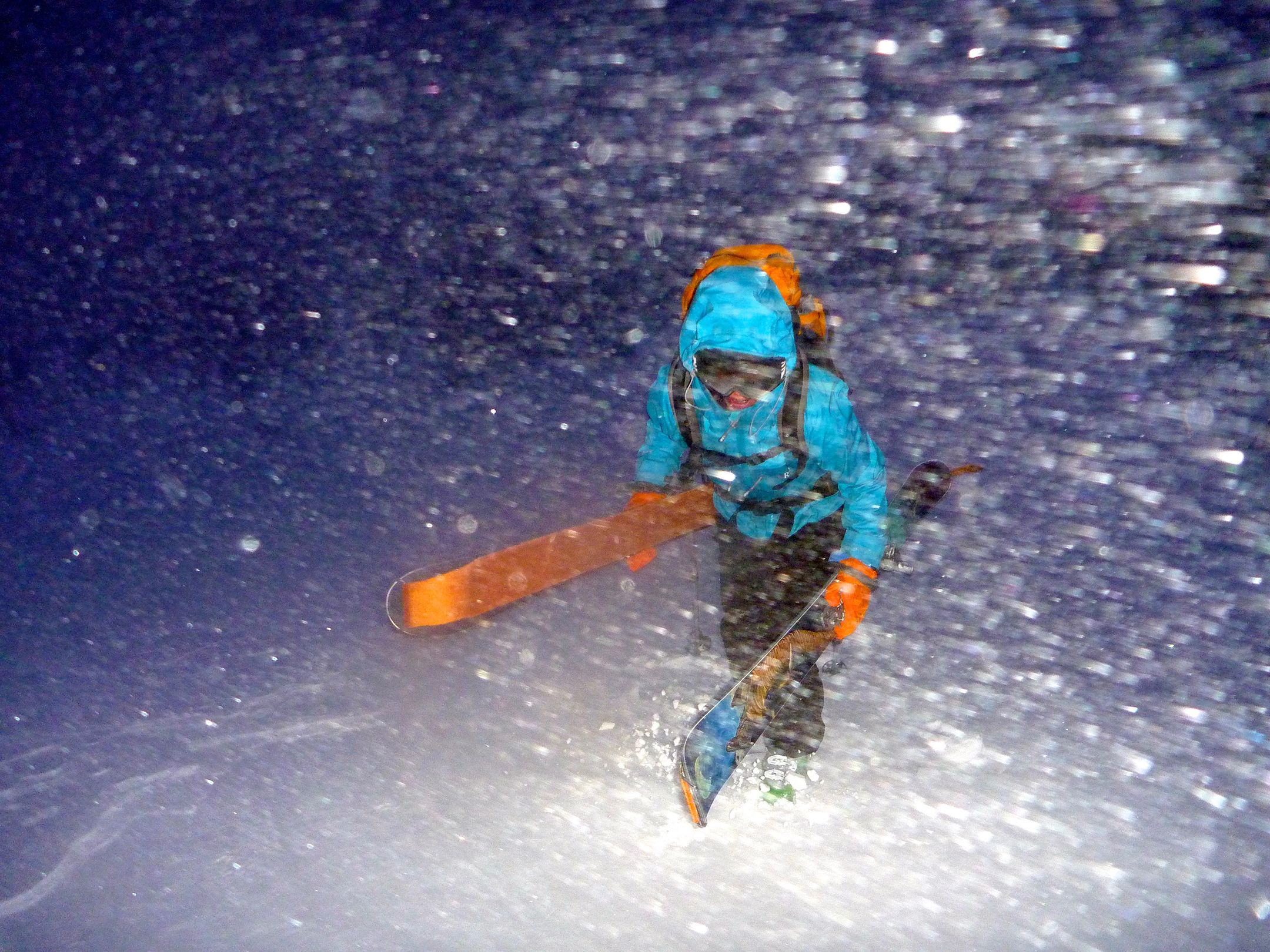
Pre-dawn backcountry laps are rarely confused with morning trips to Starbucks. - Find a go-to route – Skiing 100 days requires consistency and repetition. It’s kind of like going to the gym (wait, it’s WAY better than going to the gym) in that a regular place to go and a routine is needed. I find 1,000 vertical feet is a magical number. I still get a good ski in but can usually make it happen in an hour or less. Us working stiffs don’t have all day. Pick a few spots and get efficient at them.
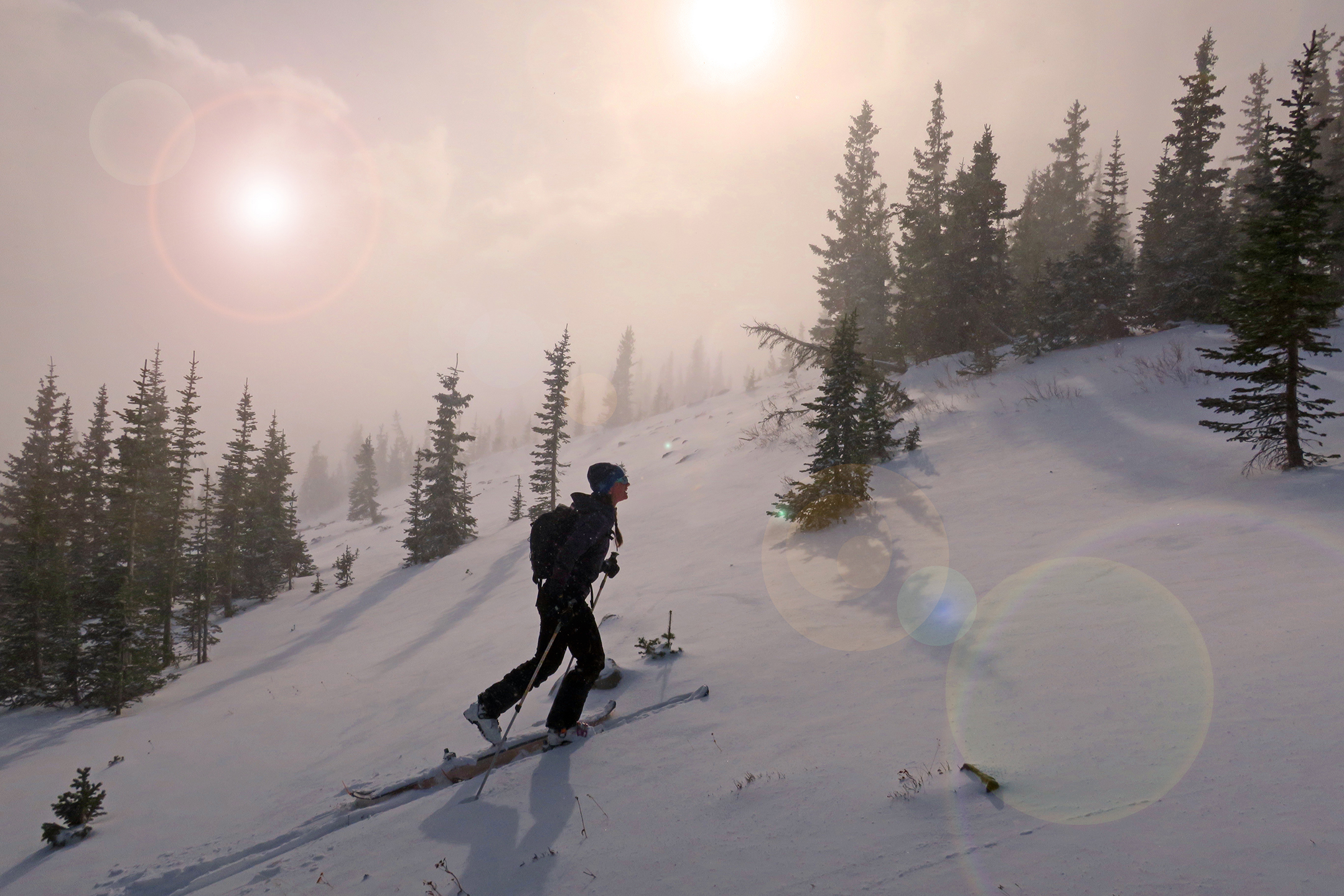
The local haunt. Pick a few this winter and learn them well. - Lighten up – Lighter gear is faster. It’s not necessary to go full randonee racer, but I promise a good AT boot, a light pair of skis and a tech-style binding will be way faster than a heavy alpine boot with an Aprés ski mode and a big bulky frame binding. Speed is your friend. The less time you spend going up, the more realistic it is to get sleep and still get in a good ski before work.
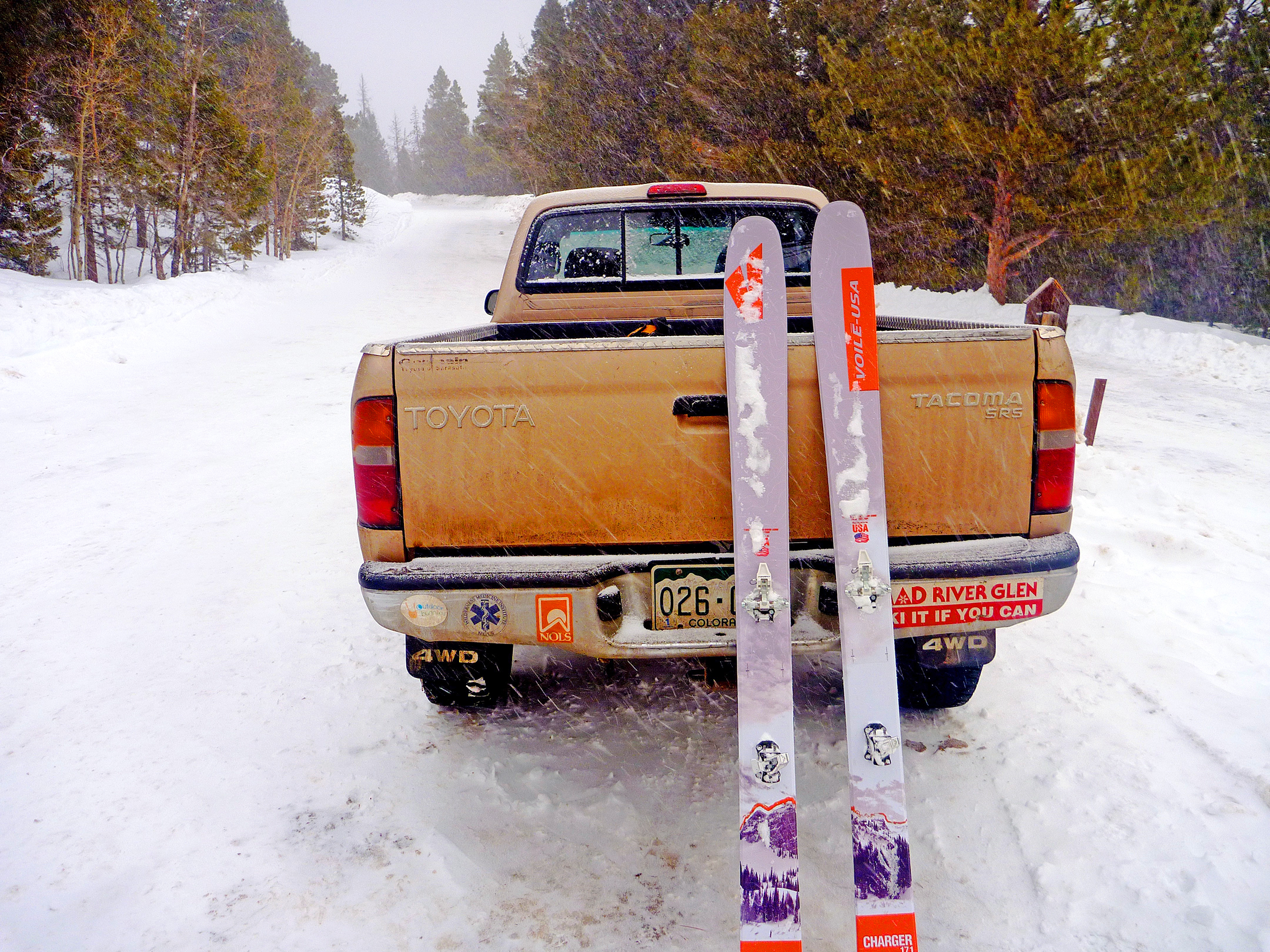
Lightweight backcountry skis, tech style bindings and good snow tires make morning sessions more efficient. - Go nordic skiing – Elaine and I embrace all types of skiing minus the 225 meter ski jump at Vikersund. We alpine, tele, backcountry, nordic tour and nordic track ski. When the backcountry gets crappy as it sometimes does here in the Front Range, nordic centers provide an outlet. Consistent grooming ensures good skiing during long dry spells. Also, there is no better way to build fitness quickly than nordic track skiing. The skin track will feel flat after a 6:30 am anaerobic threshold workout at 9,500 feet above sea level on nordic skis. Careful though, you might end up falling in love with the sport and make it your go-to.

Get your nordic on. Because really now, who doesn’t want abs like those? - Embrace resort skinning – Resort skinning lacks the aplomb of the backcountry, but for many folks this is a necessity to daily skiing. Many resorts allow skinning before and after work. Gear choice is simple, you don’t need a partner and you can just pop on the headphones and jam out if you feel the need to escape. Summiting the top of Arapahoe Basin as the sun is setting at 13,000 feet on the Continental Divide listening to whatever music makes you feel good is one of the finest skiing experiences around in my book.

Sunset laps at A-Basin are a great way to end the work day. - Give yourself a test – Self-motivation is awesome but sometimes we need a little extra push to get out the door. This is where a big race, goal or ski trip later in the season can provide powerful impetus to go ski. Every year we’ve signed up for something, or planned a much bigger trip that requires fitness and comfort in the backcountry. Go register for that Elk Mountain Grand Traverse or something similar. It will lead to a great winter because it will get you skiing regularly.
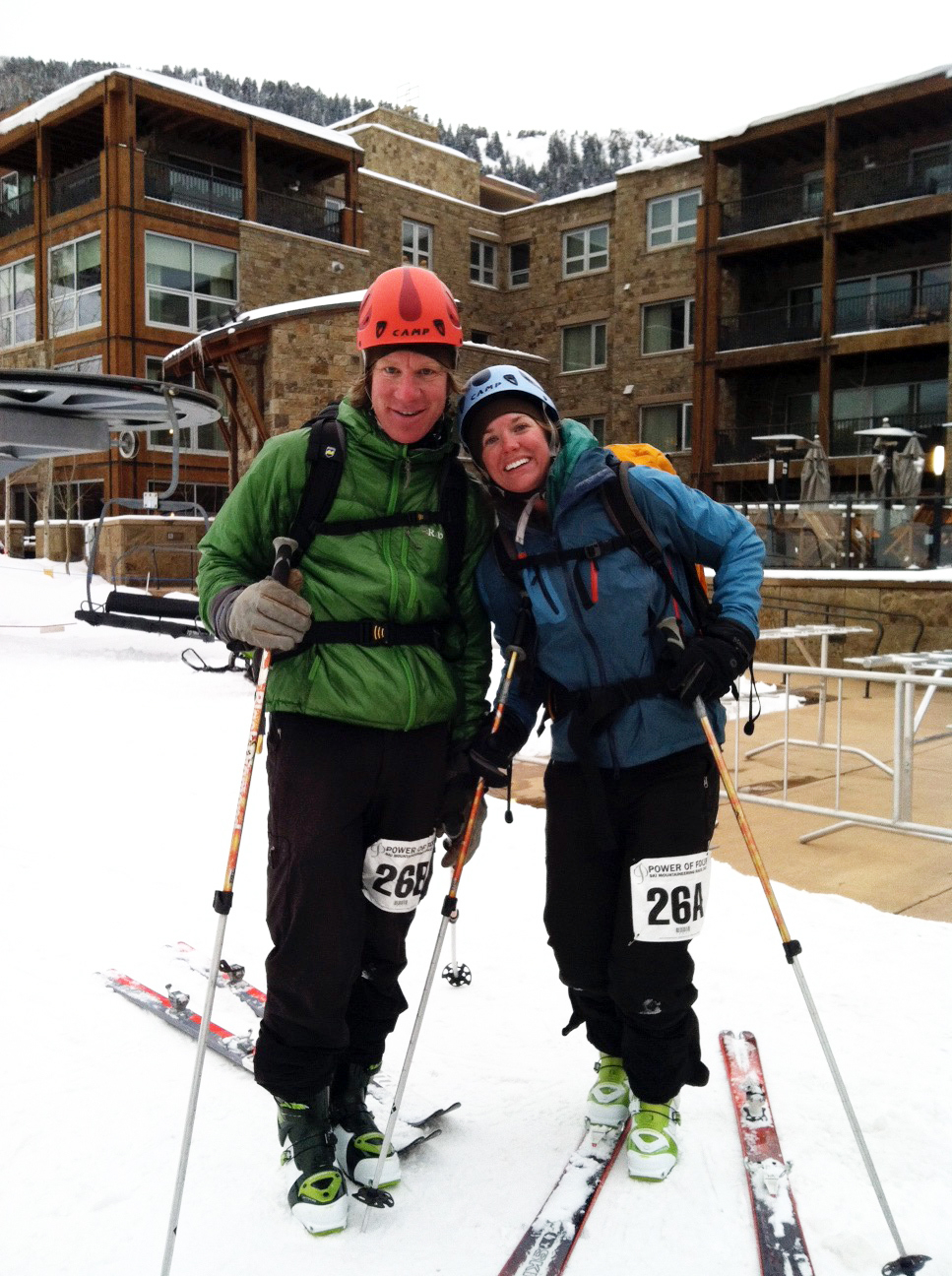
Our first ever BC race together was the Power of Four in Aspen. It was a test alright! We ended up spending the night in the guest bedroom of a Hedge Fund guy’s mansion because he was worried we’d crash our car driving home after a 15 hour ski race. - Give yourself regular skiing rewards – Beyond an end of the year goal, dot your ski season with fun trips. Maybe this is the year to take that long backcountry skiing weekend to Teton Pass? Nelson, British Columbia is an easy, inexpensive trip and the skiing is out of this world. Or book a Colorado hut trip, ski powder all day and get tipsy with friends at 12,000 feet in the evening – easy to do at that elevation after exercising in the fresh mountain air all day. Plan some awesome (not expensive) trips to snazz up the season and keep it fun.

It’s hard to ski Rogers Pass, BC and not have a smile that gigantic afterwards. - Go deep into the season – Resort-only skiers have a set season: Thanksgiving to mid-April, give or take a few weeks. That’s ridiculous, because some of the absolute best skiing is in May and June. If the goal is 100 days a year, it becomes much more achievable if you extend the season to 6-7 months instead of 4-5. Embrace the concept of the endless winter.
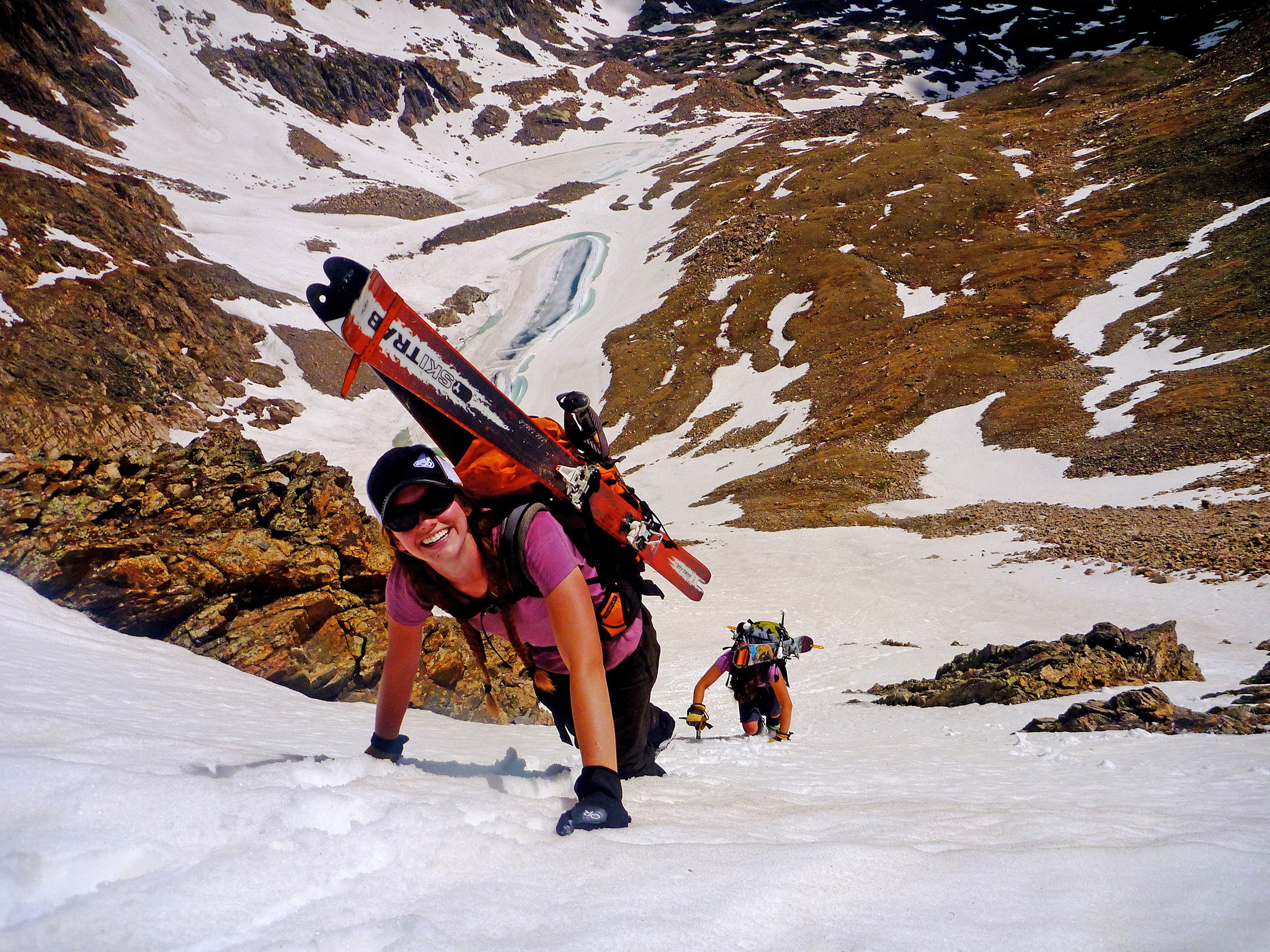
Short sleeves, corn snow and steep line. Three big reasons why the season should never end in April. - Don’t be afraid to take a day off – Skiing 100 days a year and working full-time requires discipline and consistency, but it’s not a prison sentence. If you are exhausted, sick or just burnt out, take a day or two off. I find that usually cures whatever is causing the hang up, and after a few days off I’m psyched to get back out there. By averaging five days a week on snow, 100 days a year will happen. That leaves two days a week to sleep in, grab a greasy spoon breakfast and just chill.
Once you commit to skiing 100 days this winter, start strong. Bank days early in the year. Make it a habit. After 30-40 days, it will feel automatic and you’ll begin to question why anybody wouldn’t want to ski as much as possible. There is a satisfaction to heading into work well exercised, awoken by the cold, soul filled by a gorgeous sunrise and smiling huge because that’s what snow – whatever condition it might be in – does to human beings.
Have a great winter and think snow.
If you like this article and want more content like it, we ask for your vote!: So Elaine (featured in all these photos) has signed up for Fjallraven Polar Expedition, a dogsled trip with Fjallraven in northern Sweden this winter. She’s quite well qualified I think but it’s a social media, popularity contest based entirely on votes, and despite what our boss Larry says, we’re little pions in the social media world. So, if you are so inclined, cast your vote her way! We promise, there will be an amazing story on here when it’s all said and done. D&E
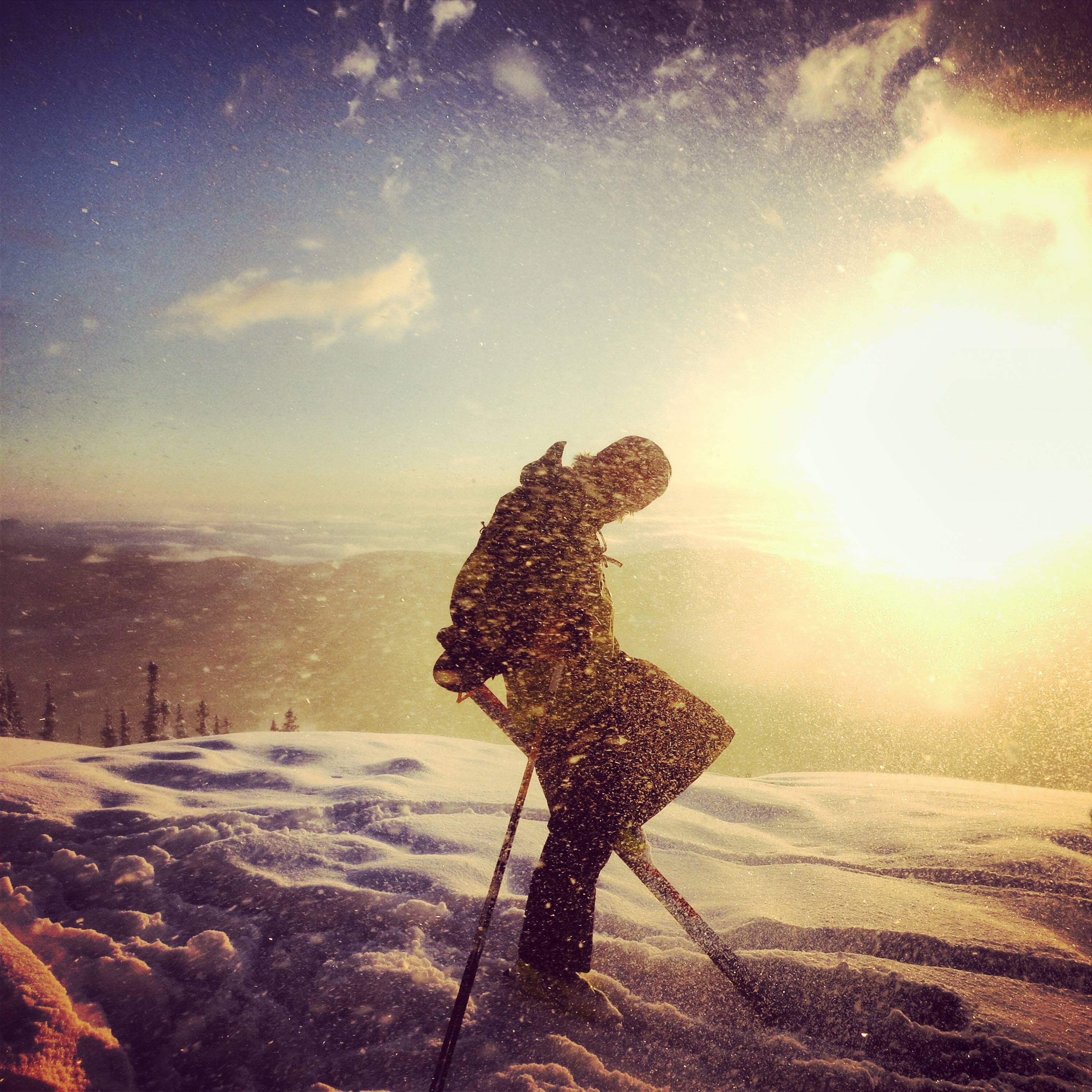

Awesome! Thanks – truly inspiring, even here where the snow is nothing like it is there!
LikeLiked by 1 person
I made it to at least 40 days last winter (not sure of my exact count- but I had 32 resort days, so definitely at least got 40 total). Hoping to hit that again this season! Having an AT setup will help 🙂
LikeLiked by 1 person
I hit 40 days last season (got in 32 resort days, lol). Hoping to hit that number again this season, if it ever snows again. Having an AT setup will help 🙂
LikeLike